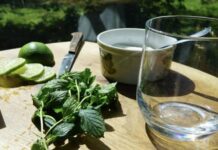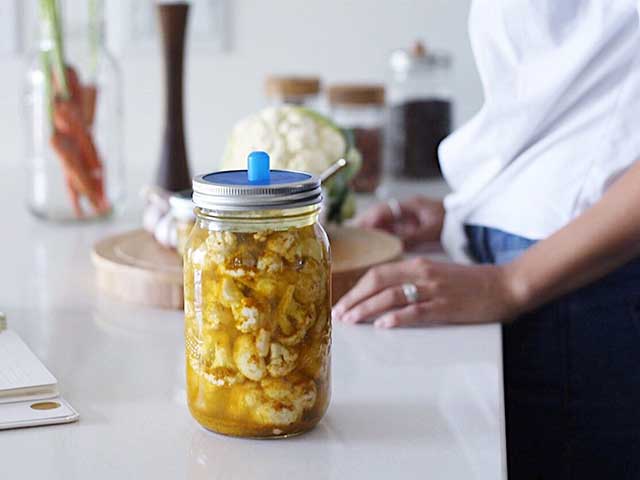Different places and cultures have different ways of serving and eating their meals but we’ve listed below the basic way a 5-course meal is served. Serving meals in courses make the meal more special. While meals can be served in any number of courses, the norm is to serve either 3, 5, 6 and 7-course meals. While a three-course meal usually has an appetizer, a main course, and a dessert, a four-course meal might include a soup, an appetizer, a main course, and dessert. A five-course meal includes a soup, an appetizer, a salad, a main course, and a dessert and a six-course meal usually includes an amuse-bouche, a soup, an appetizer, a salad, a main course, and a dessert. A seven-course meal includes an amuse-bouche, a soup, an appetizer, a salad, a main course, a dessert, and a mignardise with coffee or tea.
Since we are talking about a 5-course meal, this is how it goes:
Order of course
1.Soup
Soup is the first thing that is served in any course meal. Meals always start with soup, which can either be served warm or cold depending on the place, weather and season.Soups are mainly categorised into two groups, the clear soup or the thick soup.
2. Appetiser
There are a variety of appetizers to choose from. The appetizer is also referred to as the entrée in many parts of Europe as it introduces the main courses in a meal. These dishes are usually served on small appetizer plates and feature small cuts of meat, seasonal vegetables, starches, and sauces. In India our tandoori dishes make great appetizers and are also very popular.Wine can be served with the appetizer.
3. Salad
Salads range from cold cuts to fruit and vegetable-based ones with a variety of dressings.
4. Main Course
Served on a dinner plate, the main course usually follows the entree course and consists of several courses. It’s also the heaviest course, especially if it’s an Indian main course! We Indians love our rotis, daals, curried and dry vegetarian and non vegetarian dishes, along with papad and a variety of achaars.
5. Dessert’
The dessert rounds up everything. It’s interesting to know that the word dessert came from the French word desservir which means to clean the table.
Placement of Utensils
 (Image credits: tomreeder )
(Image credits: tomreeder )
Setting the table for multiple courses requires more pieces of flatware, dinnerware, and glassware. Firstly the Utensils are placed in the order they are used, going from the outside to the inside. One fork for each of the meat dishes a spoon for the soup and dessert, knives for the entrée, butter, and if you are serving fish, a charger, a dish for the butter/bread. But the first thing to do is start by putting a tablecloth on the table and placing a beautiful centerpiece on the table. But what needs to be kept in mind is that the centerpiece should not disturb the guests and guests should be able to see each other’s faces. It’s a nice idea to add a few candles to make the table look more beautiful for an evening meal. Napkins should always be placed on the left side with the flatware.
There should be a selection of glasses on the table. For example, if you are serving wine then you should place a goblet for white wine, a wine glass for red wine and a champagne flute if you decide to serve champagne. Like the utensils, glasses should be placed in order of use. While water is often served already in the glass, champagne and wine are poured during the course of the meal. Also, the glasses to be used depends on what you are serving with dinner. The water goblet is placed directly above the knife, level with the bread/butter dish. The wine glass is placed to the right of that, typically above the soup spoon. If you add a third wine glass (for a different kind of wine), place it above and between the water glass and the first wine glass.
Since each course is brought out of the kitchen on its own dish, there is no need to keep dishes on the table. What you do need is a charger, a large dish that goes beneath each of the plates the courses are brought out on. The charger will remain on the table until after the entrée finishes and then it should be removed along with the entrée plate. Place the charger in the center of each setting. The butter/bread dish is another must have on the table. This is to be placed up and to the left of the charger.
Utensils, as mentioned above, should be used from the outside in. On the left side of the charger, you should have your salad fork, fish fork, and the entrée fork. The dinner knife is placed on the right side of the charger. The dessert spoon and optional dessert fork are placed above the plate aligned horizontally, while the butter knife should be placed diagonally across the butter/bread dish. The utensils should be evenly spaced from each other and the charger.
Note: In case you are not serving fish, then there is no need to place a fish fork and fish knife on the table.
Last but not the least the desert should be placed in the center of the setting.














